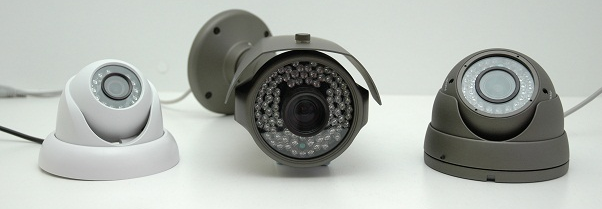
What is HDCVI?

High Definition Composite Video Interface (HDCVI) is brand new to the CCTV and security camera industry. With it, comes a few new, and very cool capabilities. While you may not see any great advancements in the high definition (HD) resolution, these new features that come at a pretty incredible price do more than impress.
Cable Runs
HDCVI is a little different from other analog and HD type cameras. Unlike other variations, you'll find that in most cases, you'll need to be using solid copper RG59 Siamese cable. Why? Well, it's because HDCVI cameras are capable of transmitting video up to 1600 feet. Let that sink in for a moment. Gone are the days of being limited to runs up to 300 feet with standard analog and other HD cameras.
All of this being said, you still need to pay close attention to your power runs. While video can be transmitted over coax up to 1600 feet, your power cable is still going to be limited to 300 feet. You can augment this with higher voltage power supplies and converters but make sure you know what you're doing before you accidentally end up frying your cameras.
The standard copper clad RG59 cable will still work with HDCVI camera systems. If you go this route, you may experience video degradation. Up to about 250 feet, you shouldn't really notice any loss in image quality, but after that you'll notice a faded contrast, lines starting to form, and a shadowing effect. You'll never fully lose your video feed, but these negative effects will gradually get worse.
Using Cat5e cable with baluns is another option but it's limited. At only 25 feet, you begin to see the same loss in contrast. At 50 feet, lines, and shadowing start to appear. Like the copper clad RG59, you'll never fully lose your image, but it will continue to go down hill.
Cat6 cable, while thought to be the solution, is simply not. At just 50 feet, shadowing begins to show. At 100 feet, the shadowing becomes very obvious, and contrast begins to fade.
Be wary of using any factory/plug-and-play cable or companies selling complete HDCVI systems with this type of cable. At 25 feet, we've immediately seen a lost in contrast. At 50 feet, lines begin to form and shadowing becomes apparent. As it is in other cases, as distance continues to increase, so do the problems in the image. Be sure to read all about which type of cable to use with HDCVI and other HD over coax security cameras.
Pan Tilt Zoom Cameras (PTZ)
One of the biggest hassles with analog PTZ cameras is knowing that even after you run your length of Siamese Cable for the camera, you'll still have to run an additional cable for data (RS485). Without that extra cable run, you don't have any control over the pan, tilt, or zoom features.
Take the added cost and labor of that extra cable run and throw it out the window with HDCVI. The PTZ cameras of the HDCVI type are capable of achieving that RS485 data connection without the use of an extra cable. It's all done right through the same coax cable that's transmitting video.
Pricing
HDCVI is most comparable to High Definition Serial Digital Interface (HDSDI) as far as resolution and hardware is concerned. However, when it comes to price, there is no comparison.
A good quality 4 channel HDSDI DVR will cost around $400 to $500. Camera's will range based on features, but even at a basic level, you'll see them costing around $250 a piece. Again, we're talking about quality items.
A solid 4 camera HDCVI DVR will run about $250 while a basic fixed lens camera will only cost you a little over $100. If you're wondering, this is only slightly above the cost of standard definition CCTV cameras. **UPDATE: Since HDSDI has finally been outed as a completely unreliable option for CCTV, you will now see a reduction in price as manufacturers and distributors attempt to dump all remaining stock. Read more here.

